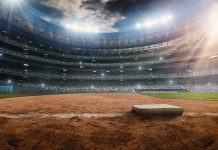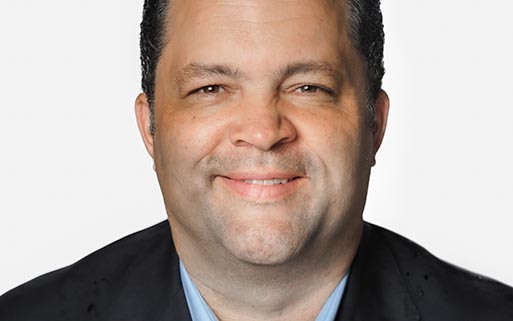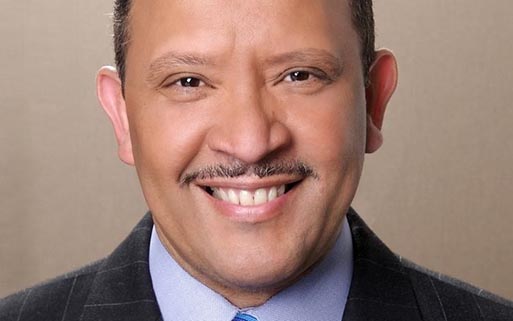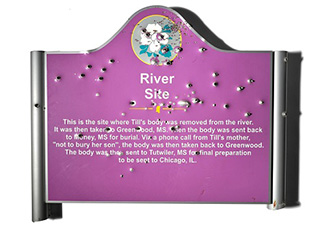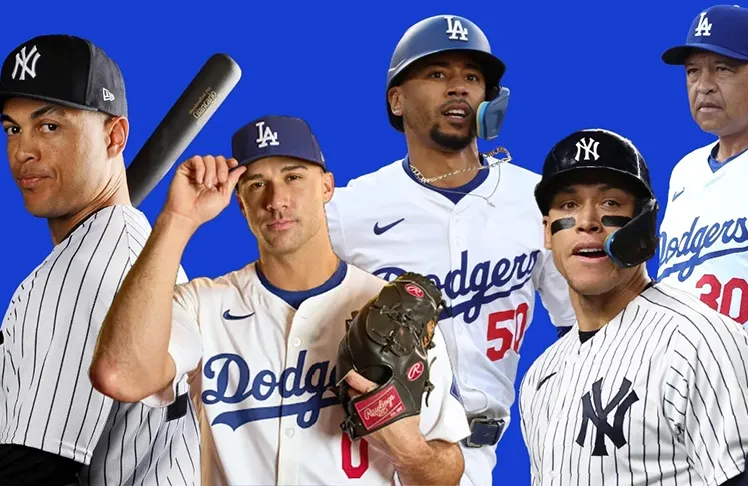
Get ready because the Los Angeles Dodgers and New York Yankees are about to give us that classic East Coast-West Coast rivalry we love. The 2024 World Series kicks off Friday night, and I’m not even going to front: I’ve called Los Angeles home for 25 years, so c’mon, Los Doyers — as they’re affectionately called in LA — show up and show out.
I’ll be rocking my commemorative Jackie Robinson No. 42 Dodgers jersey while tuning into the game. But we might all end up feeling like we’ve time-traveled back to 1947 — the year Robinson started for the Dodgers and broke Major League Baseball’s color line — because we’ll be able to count the number of American-born Black players on one hand. And have a finger left over.
A grand total of four American-born Black players — not Afro-Latino players from the Dominican Republic or Puerto Rico — will play in the 2024 World Series.
Let’s put some respect on their names: Nashville native Mookie Betts, 32, and hometown hero Jack Flaherty, 29, will hold it down as the two African American players repping the Los Angeles Dodgers. Aaron Judge, 32, and Giancarlo Stanton, 34 — both California natives — are the African American delegation from the Yankees.
Black American Baseball Superstars
And when I say these brothers are superstars — Judge is out here leading the league with 58 home runs and the best batting average in 2024. Stanton’s been the playoffs’ best slugger, with two Hank Aaron Awards in his trophy case.
Betts? One of the best all-around players breathing air right now: eight-time All-Star with six Silver Slugger and Gold Glove awards. Flaherty? He notched 61 strikeouts in just 10 regular season games after joining the Dodgers at the end of July. No wonder manager Dave “Doc” Roberts — the Dodgers’ first nonwhite manager — is starting him in Game One.
“What’s not in baseball is culture.” – mookie Betts, star Dodgers Outfielder
If we want to be generous about the number of African Americans on the field, a special shout-out goes to Roberts, one of only two Black managers in all of MLB.
In 9 seasons as Dodgers manager, Roberts has a regular-season winning percentage of .627 — the highest in major league history. His teams make the playoffs every year, they win more than they lose once they get there and they have played in the World Series 4 times, winning the championship in 2020.
But as Clinton Yates recently wrote for Andscape, Roberts hasn’t gotten the flowers he deserves. He isn’t among MLB’s highest-paid managers, he’s not a baseball icon like the other white Dodgers managers were, and fans see him as “serviceable” — overlooking the baseball genius he is.
Four Is an Improvement
If you’re shocked that four Black American players is all we’ve got, these numbers are actually up from the 2022 World Series, which had zero African American players. Zero. The problem goes beyond the World Series, too.
On Opening Day this year, only 6% of players on all MLB rosters combined were African American, down from 18% in 1991. What’s the deal, you ask? It’s a perfect storm of what’s wrong with being Black in America: poor marketing, a disdain for hip-hop and Black youth culture, the Black-white wealth gap and good old fashioned American racism.
Baseball Is Expensive
Want to take your kids to a game? Moneygeek estimates that this year, it cost a family of four an average of $219 to see the Dodgers during the regular season and $161 to see the Yankees.
Want your kids to play? Baseball ain’t cheap: In 2023, retired professional baseball player Corey Smith told Word In Black sports columnist John Celestand that the sticker price even for Little League is usually out of reach for cash-strapped families.
“With basketball, you just need a pair of sneakers. With football, most of the time, the equipment is provided. But with baseball, a bat is $500, a decent glove is $250, and a pair of cleats is $100,” Smith said. “Once you add in batting gloves and other accessories, you have almost spent $1,000 off top.”
And that’s before coming out of pocket for batting cage time, offseason workouts to improve skills or elite, pay-to-play travel teams — the modern-day replacement for neighborhood sandlot teams and the pipeline to college and the pros.
Raggedy Baseball Fields
Then there’s the ongoing underfunding and infrastructure problems plaguing Black communities. Baseball fields at schools and parks might not be well-maintained — if there’s even a park at all in a Black neighborhood.
Chicago parent Ivette Trevino put it plainly to Yahoo Sports in 2020. “What I’ve seen and experienced is the lack of development, updates, upgrades, and repairs to fields,” she said. “I see deteriorating fields and bleachers, which leads to them being converted into soccer fields.”
Back in the late 1980s, invoking Jackie Robinsion’s name, Major League Baseball pledged to invest millions in building urban ballparks and funding teams in underserved neighborhoods. The goal was to rebuild the connection between Black kids in the city and baseball — the same path that produced Darryl Strawberry, an MLB legend who learned the game as a boy growing up in South Central L.A. in the 1970s.
Nearly 40 years later, and despite Nike pouring in a small fortune, it’s safe to say the results are disappointing at best. When Robinson retired in 1957, the percentage of Black American players in the majors was 6.7% — slightly higher than it is right now.
The Visibility Problem
Negro Leagues Baseball Museum co-founder Phil Dixon recently told the New York Amsterdam News that Black America has less exposure to the game. “Most of the stations that carry baseball are stations that Black people typically don’t even listen to when the baseball season is over,” Dixon said.
If Black families can’t afford game tickets, if Black kids aren’t seeing games on television because MLB has signed a deal that puts the local team on a premium sports channel, and if they aren’t listening to a game on the radio, how are they supposed to fall in love with America’s pastime?
Where’s the Black Culture in Baseball?
Betts from the Dodgers gets it. He made headlines in 2022 for rocking a “We need more Black people at the stadium” T-shirt during batting practice before the All-Star game.
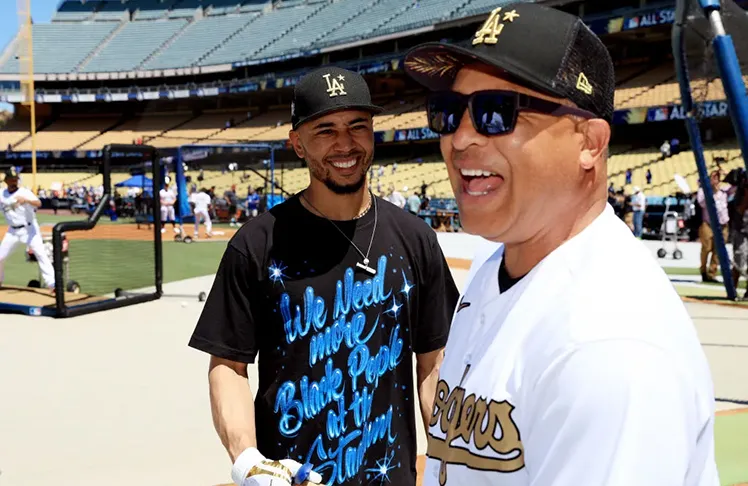
He put it more directly last year: “What’s not in baseball is culture.”
Chris Rock called this out in 2015, saying baseball is “old-fashioned and stuck in the past,” — playing organ music while basketball and football embrace hip hop. “Where’s the beats by Dre?” he quipped.
But as much as they love America’s Pastime, our four World Series African American stars might also feel the absence of “us.”
Betts recently acknowledged to the Washington Post that when he looks around, he feels isolated: few people in the stands who look like him; even fewer beside him on the field. But he’s right when he says fixing the lack of Black fans and players is “way above my pay grade.”
He’s right: this is a systemic issue that’s on MLB to solve. But they have to want to solve it.
They must make the game accessible, culturally relevant, and welcoming to Black America. And they have to get more than four Black American players to the World Series. Until that happens, though, I’ll cheer these four superstar brothers as they ball out in this year’s World Series.
I want the Dodgers to win. But as Issa Rae said so well, I’m rooting for everybody Black.



